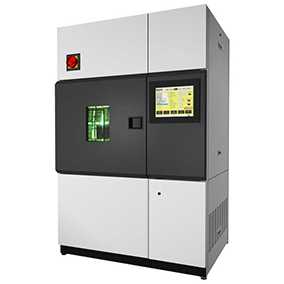Desktop xenon lamp aging tester for material aging test

As we all know, materials are easily aged under various environments, and various products cause billions of dollars of economic loss every year. Material damage mainly includes: discoloration, loss of light, loss of strength, cracking, flaking, chalking, oxidation, etc. Let us understand in detail why materials deteriorate. The main factors leading to material deterioration are light (especially ultraviolet light), heat and moisture conditions such as rain, dew and high humidity, where light and moisture often produce synergistic effects. Some materials have good durability under light or moisture conditions, but often fail under the synergistic effects of light and moisture. So why xenon lamp weathering test chamber for material aging test?
1. xenon lamp climate-proof test chamber humidity simulation.
Humidity and relative humidity are key parameters for many material tests. Xenon lamp aging chamber with water spray and relative humidity control function.

The xenon lamp aging tester simulates the main factors of material aging is sunlight and humidity, and the weather resistance tester can simulate the hazards caused by sunlight, rain and dew. The xenon lamp aging tester uses xenon lamp to simulate the effect of sunlight exposure and condensation to simulate rain and dew. The material under test is placed in a cyclic program of alternating light and humidity at a certain temperature for testing; the hazards of months or even years outdoors can be reproduced in a few days or weeks. Artificial accelerated aging test data can help select new materials, improve existing materials, and evaluate how changes in formulation affect the durability of products.
2. The spectrum produced by the xenon lamp test chamber should be filtered to reduce unwanted spectral components. Different types of glass filters can obtain different spectra. astmg155 defines three commonly used filters: sunlight, window glass, and ultraviolet extended filters.
There are several different types of sunlight, window glass, and UV extension filters. Most xenon test chambers simulate the effects of humidity through a water spray or humidity control system. The limitation of water spraying is that when lower temperature water is sprayed onto a higher temperature sample under test, the temperature of the sample also decreases, which may reduce the aging rate. However, water spraying does a good job in simulating thermal shock and mechanical erosion.
3. Xenon lamp aging tester relative humidity control.
Many models of the xenon lamp weathering tester have relative humidity control. When materials are subjected to physical stress, they try to maintain a moisture balance with the surrounding environment, which will affect the degradation of the material. Relative humidity also affects the rate of drying of the sample. The xenon aging chamber directly sprays water to simulate the effects of outdoor wet erosion. The water spray can be set in a light or dark cycle. In addition to oxidation, water spraying can cause thermal shock and/or mechanical corrosion.
2021-10-29 11:31

